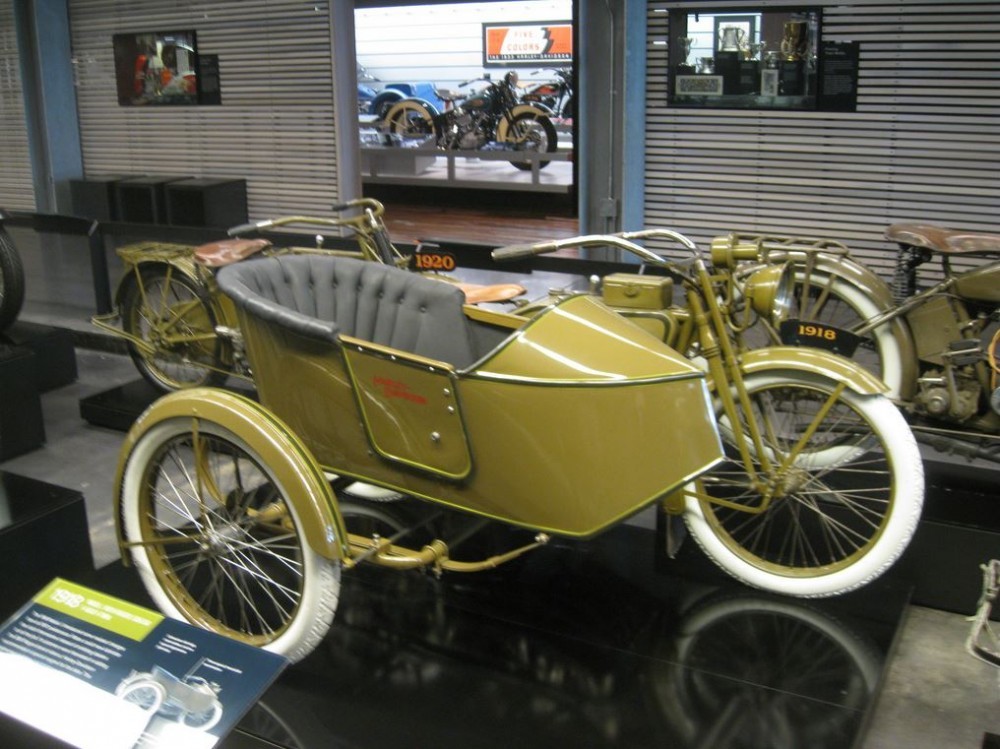Harley-Davidson first added sidecars to its model line in 1914, and later offered specially tuned engines for sidecar use. Before then, standard bikes such as this Model J just had a sidecar bolted onto them. Harley’s big F-head V-twin was ideal for pulling a sidecar and the company began offering sidecars as an option in 1914. From then until 1925 Harley’s sidecars were built by the Rogers Company, but when Rogers ceased production Harley started building its own chairs. Production has continued, but they are now built in small numbers.
 |
| Harley-Davidson 1918 Model J Sidecar |
A sidecar meant motorcycle riders could now transport their family, large packages, or even a nervous crinolene-clad girlfriend, for whom the sidecar was a poor substitute for a proper motor car. Period sidecar production was influenced by the horse-drawn buggy. The body was mounted to the chassis by springs that isolated the passenger from the worst jolts of the road surface. The sidecar peaked in the years leading up to the 1920s, with some Harley examples even used on the battlefields of World War I, but the Model T Ford made the car cheaper, and from around 1920 the sidecar became a minority interest for the eccentric enthusiast.
SPECIFICATIONS
Harley-Davidson 1918 Model J Sidecar• ENGINE Inlet-over-exhaust, V-twin
• CAPACITY 61cu. in. (1000cc)
• POWER OUTPUT Unknown
• TRANSMISSION Three-speed, chain drive
• FRAME Tubular loop
• SUSPENSION Leading-link front forks
• WEIGHT 325lb (147kg)
• TOP SPEED 55mph (89km/h) (est.)
 |
| Harley-Davidson 1918 Model J Sidecar |


No comments:
Post a Comment